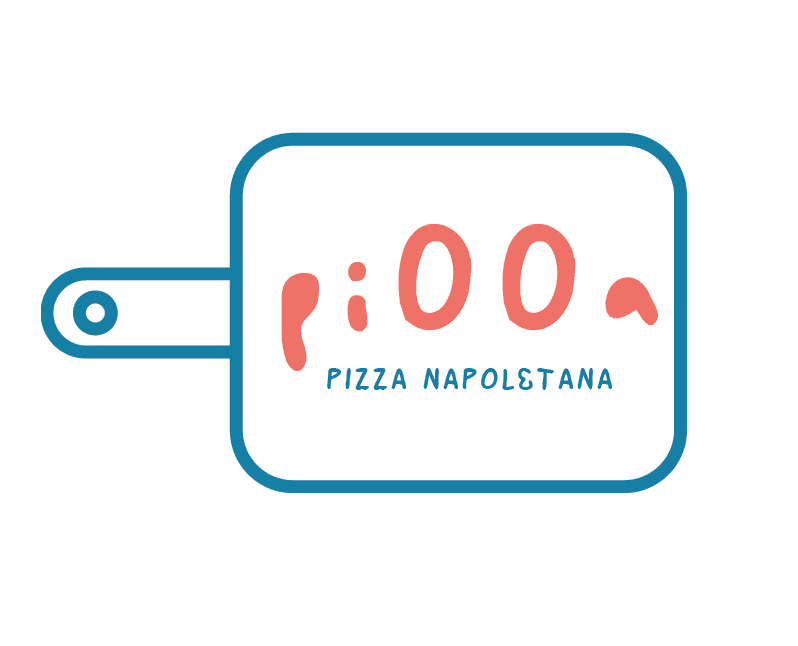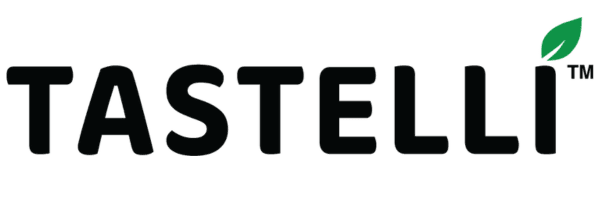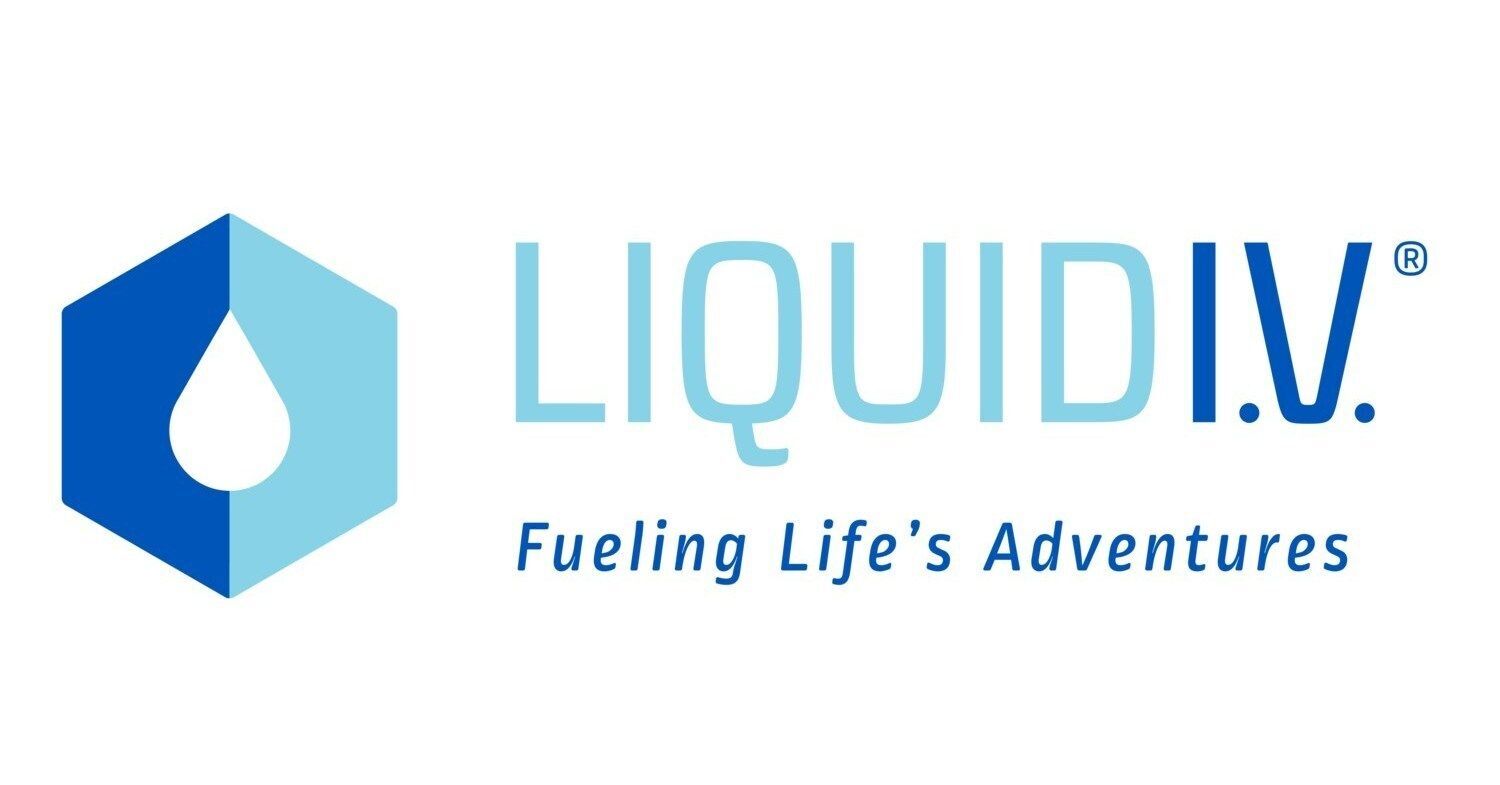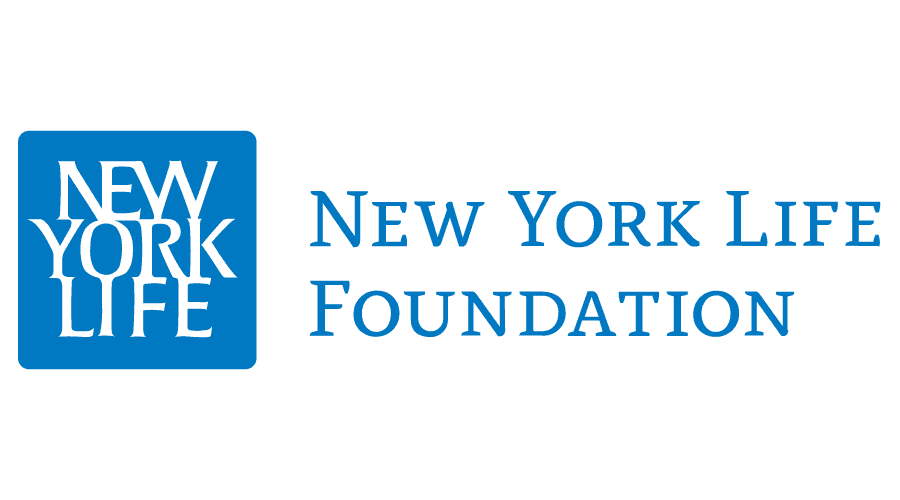Thank You to Our Heroes!
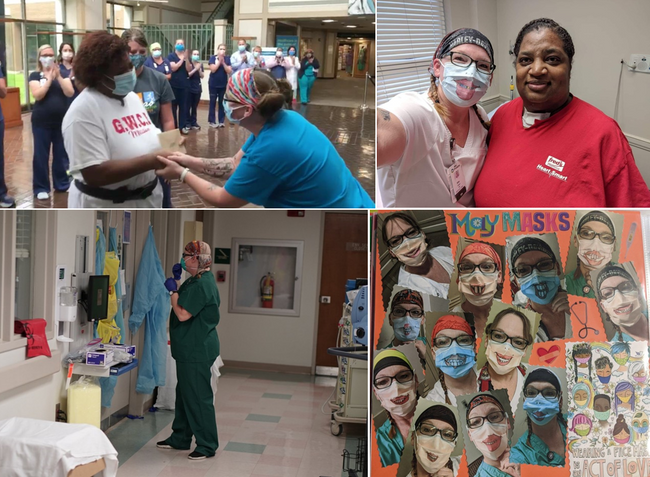
Kim Sloan, ICU RN
Phoebe Putnum Memorial Hospital
Today we want to honor Kim Sloan, a ICU RN at Phoebe Putnum Memorial Hospital in Albany, Georgia. Here is her story as reported by Helena Oliviero from The Atlanta Journal-Constitution
The first time Kim Sloan set eyes on her patient, the middle-aged woman was unconscious and clinging to life. Laconyea Lynn was as gravely ill as any patient Sloan had seen since she began working as an intensive care nurse at Phoebe Putney Memorial Hospital in Albany. The 48-year-old’s CT scan showed hazy opacities in her lungs, indicating inflammation in her airways. Her kidneys were shutting down. A machine forced oxygen into her lungs, and a feeding tube provided sustenance. She was feverish, swollen and developing the first of many blisters.
Lynn was Sloan’s introduction to COVID-19, a disease that was sweeping the globe on that day in mid-March. Just 48 hours earlier, Lynn’s mother had died from the same disease at the same hospital. And it seemed inevitable that she would soon follow. Lord, help us get through this, Sloan remembers praying, assessing that her patient was in her final hours. But much to the nurse’s astonishment, this would not be the end for Lynn. Hours unfolded into days, and the days into weeks.
As the number of cases in Albany mushroomed, schools closed and businesses shut down, Lynn’s body kept fighting. As ICU beds filled, grocery shelves emptied and stay at home orders were issued, she held on. For 71 days — 60 days longer than most patients with the same disease — Lynn was a constant at Phoebe Putney Memorial. And Sloan was at her side. Kim Sloan, an intensive care nurse at Phoebe Putney Memorial Hospital, and patient Laconyea Lynn, shortly before she was discharged. “The doctors and nurses, Nurse Kim, they were so compassionate. I don’t think I would have made it without them. I’m thankful they are part of my life,” said Lynn. Lynn and Sloan now keep in touch on Facebook.
“Every shift, we had someone who died,” said Sloan. “It was just a matter of whose patient was it going to be today, and sometimes it was two or three patients.” For reasons no one fully understands, Lynn survived, despite weeks of failing health. A nurse and patient bond At the beginning of March, Lynn began to feel a heaviness in her body, and she had little energy. Soon, the simplest of chores exhausted her. She thought she might be coming down with the flu, even though she had gone for her annual flu shot. Something was not right, she decided, so she went to an urgent care center on March 10. There, they found Lynn’s oxygen levels was at a perilously low 68%, requiring immediate treatment to prevent organ failure and death. A healthy level of oxygen saturation in the blood is normally measures 95 to 100% on a pulse oximeter. Readings lower than 90% are considered danger zones.
Kim Sloan, an intensive care nurse at Phoebe Putney Memorial Hospital, develped a special bond with patient Laconyea Lynn. She made sure to be there when Lynn left the hospital to go home. Here is Lynn, hugging her son, Victor Hilson. Sloan is in the background.Lynn said she continues to get better and looks forward to going back to work as a caregiver for an elderly couple during the coming weeks. She and her son are also planning a fishing trip. A nurse decided Lynn couldn’t wait for an ambulance and wheeled her to the hospital across the street.
Lynn remembers doctors saying she likely had pneumonia. At the time, as far as they knew, they had not seen a COVID-19 case in Albany, though it soon would be clear the virus was already spreading. Her mother, too, had been feeling ill and was hospitalized a few days later. The rest is a blank for Lynn. She was first admitted into a regular room, but her condition deteriorated. Two days later, she went into respiratory distress and was transferred into the ICU. The next thing she would remember is waking up six weeks later. Lynn has no idea how she got the coronavirus.
Officials believe many of the early COVID-19 cases in Albany were linked to two large funerals, one at Gethsemane Worship Center and the other at New Direction Christian Church. Lynn said she and her family are members of the Gethsemane Worship Center, but they didn’t go the funeral. Lynn suffered several complications. There were blood clots. Her kidneys were failing, and she needed dialysis. She developed blisters on her arms, legs, her face. Every shift, Sloan came into ICU room No. 11, carefully monitoring and adjusting medication drips, checking Lynn’s vital signs. She’d turn Lynn on her stomach to help increase the airflow to her lungs, a maneuver called proning. She always spoke to Lynn when she was in the room, describing what she was about to do, such as checking her blood pressure. She’d also pass along messages from the patient’s son — words of love and encouragement. He was not allowed to visit because of restrictions put in place to stop the spread of the virus. Once, while giving Lynn a bath, the nurse sang the hymn “Amazing Grace” to her. Sloan also kept the TV on to provide another — maybe comforting — sound to go along with the constant beeps and alarms of the pumps, vital sign monitors and ventilator.
“Every day, I looked into her room and I was like, wow, she’s still alive.” Kim Sloan, an intensive care nurse at Phoebe Putney Memorial Hospital, experienced very difficult days taking care of patients with COVID-19. “It was devastating, day after day, to see patients die,” said Sloan. It was Sloan’s job to provide Lynn with the best care she could. But she also felt a kinship with her patient, both being in their late 40s. Sloan talked to Lynn’s son, Victor Hilson, who is 27, every shift. He reminded Sloan of her own son.
“All I could say was she critically stable, as of right now. And I told him, ‘Keep praying, because I don’t know if she is going to make it.’ It was an awful conversation to have with a young man. He was unbelievably polite and the most loving young man, which made it even harder. Every time I hung up the phone, I just thought, this sucks.” A former editor of a newspaper in a small town in Ohio, Sloan changed careers 12 years ago. “Normally in the ICU, you are able to fix people,” she said. “There’s exceptions. But, for the most part, you are able to treat patients, and they improve.”
Sloan prayed for Lynn and asked family members across the country to pray for her patient, a 48-year-old woman who “needed a miracle.” ‘The piling up of so many things’ The pandemic’s assault on Albany came swiftly. When Sloan left for a beach vacation at the beginning of March, there were no confirmed cases. When she returned on March 19, there were 73 COVID-19 patients at Phoebe Putney Memorial Hospital, including 20 in ICU. By March 31, the number had climbed to 133, including 42 in the ICU. At times, it’s been overwhelming.
Kim Sloan, an intensive care nurse at Phoebe Putney Memorial Hospital, is a biker enthusiast. Sloan and her husband, John, are both travel nurses, and were only scheduled to be at Phoebe Putney Memorial Hospital through February. Sloan said believes everything happens for a reason, and she was meant to be at Phoebe, and to care for Lynn.
First, there’s the emotional toll of caring for COVID-19 patients. On top of that, many medical workers worry about a shortage of protective wear and equipment. And many also feel a sense of helplessness in caring for patients who face a mysterious virus that barely affects some people but kills others. “There was no training for this. We were just trying to keep them alive,” said Sloan. “When I say we were trying to keep them alive during our 12-hour shifts, that is literally what we were trying to do. It was not a matter of trying to get them better.” Since early March, 132 COVID-19 patients have died at Sloan’s hospital and other hospitals that are part of the system. Meanwhile, 391 COVID-19 patients in the hospital system have recovered from the virus.
Sloan has had recurring nightmares – that she forgets to put on protective gear, touches a contaminated surface and gets sick, or that something is blocking her from her sick and dying patients and she can’t do anything to help them. Due to strict visitation rules during the pandemic, nurses have had to do a lot more than nursing — they’ve tried to make up for the emotional support that’s missing when no family or friends are around, said Nadine Kaslow, an Emory professor of psychiatry and behavioral sciences. Kaslow is leading an effort to provide mental health support to front-line health care workers and the public.
Kim Sloan, an intensive care nurse at Phoebe Putney Memorial Hospital, enjoys scrapbooking. She took photos of her masks. She draws smiley faces on them. “It was so depressing. I wanted to do something to make people smile,” she said. “There’s been this piling up of so many things that it was never ending,” she said. “It has been relentless and keeps going and going.” Sloan said she felt like she was fighting with the Grim Reaper.Watching as Lynn beat the odds day after day gave Sloan an infusion of desperately needed hope. “We had lost so many patients, and I was like you can’t have this one,” she said.
Lynn, it turns out, wasn’t going anywhere. The average length of stay for all COVID-19 patients at Phoebe Putney Memorial Hospital, including those who die from the disease, is about nine days. “There was no training for this. We were just trying to keep them alive. When I say we were trying to keep them alive during our 12-hour shifts, that is literally what we were trying to do. It was not a matter of trying to get them better.”
The Centers for Disease and Control and Prevention estimates the median length of hospitalization among COVID-19 survivors is 10 to 13 days. For Lynn, it was 10 long weeks. Sloan and a team of doctors and nurses met frequently during shifts to discuss what they could do for their patient – adding medications, adjusting vent settings and re-positioning. Day after day, ICU rooms emptied out around Lynn. And she stayed. Giving hope. By mid-April, Lynn started to improve, little by little. Proning seemed to help. She started responding to other medications for blood clots and low blood pressure.
The medical team decided they could ease the sedation. Shortly after Lynn first opened her eyes, she saw Sloan, a woman with reddish hair, yellow gown and mask with a hand-drawn smiley face. She seemed familiar. So did her smiley face mask. Initially, Lynn was frightened and disoriented. She still had a trach tube. She tried to talk but no words came out. The date was written on a white board — April 24.
Stunned, she wrote a question on a piece of paper. Each letter was labor intensive, but she had to know. Did I miss Easter? There were more surprises. She learned she had been sick with the coronavirus, an illness she only vaguely remembered reading about, one she associated with far-flung places like China and New York City, not her close-knit small community. No one had told Lynn that her mother had died of the virus. Her son had instructed Sloan and others at the hospital not to relay the news. He wanted to tell her. It made Sloan nervous. Certainly, she didn’t want to be the one to tell Lynn. But what if Lynn asked her directly?
“I just remember thinking: Please don’t ask, please don’t ask,” said Sloan. Lynn didn’t ask. In a recent interview, she said she already knew — she had a dream about her mother dying and believes it was God’s way of letting her know. Days later, her son confirmed it. In her ICU bed, Lynn prayed to help keep her spirits up. Lord, I love you, you are my strength, my rock in this world. She sang “Hallelujah” in her head. When she transferred out of the ICU to another campus hospital treating stable COVID-19 patients, and later to rehabilitation, Sloan didn’t cut ties. She visited her former patient on her lunch breaks and went to work early to spend time with Lynn.
“I wanted to see her,” said Sloan. “I think, deep down, I needed to see hope because I wasn’t seeing hope. I was seeing death.” Last month, when they were spending time together, Lynn mentioned her shoulder still hurt badly, so much she could barely move it. Sloan knew why – it had to do with proning, Lynn on her belly with her arms up to help her lungs, the nurse explained. “We had lost so many patients, and I was like you can’t have this one.”
Lynn wanted to know more. How much more? asked Sloan. Lynn wanted to hear about everything, so Sloan told her about her kidneys shutting down, the blood clots, the blisters and sores, and just how close to death she was. Everything. Lynn thanked her tearfully. She felt like she could now fill in the blanks. The number of COVID-19 patients has dwindled in recent weeks. Sloan worries about what’s to come, wondering whether this will last or if it’s a lull before a new wave of cases.But she still has hope. On a warm, cloudy afternoon on May 20, Sloan and her husband, John, drove to the hospital. It was her day off, but she needed to be there to see Lynn take her first steps out of the hospital.
Hilson — Lynn’s son — was there with open arms. They were surrounded by cheering nurses and other health care workers. Sloan stood among them, with her hands in prayer position, tears in her eyes. “To see someone I took care of survive and go home is a big deal,” said Sloan. “Maybe the nightmares will start to go away.”
Thank you Kim for your commitment, dedication, and compassion for your patients and communities.
If you have a story and pictures of a front line nurse you would like us to highlight on our website and social media, please email them to us at info@helphopehonor.org.
OUR DONORS
-
 Mary's Ayia
Mary's Ayia -
 KFA DJ Ken Ito
KFA DJ Ken Ito
















